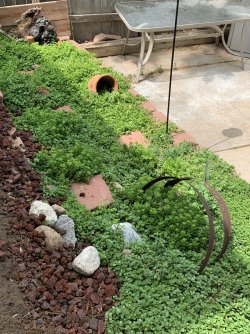I recently bought some creeping jenny plant for my Koi pond, and like always, I disinfect the plants before putting them into the pond.
Usually I would dip the plant in 10 litres of water containing 25ml of Blagdon Pond Disinfectant which I presume was a kind of bleach. Unfortunately recently all types of pond disinfectant product have disappeared from the market so I am now forced to use thin bleach which has no dosage directions for disinfecting plants.
I decided to do a 1 part 19 part thin bleach dip for the creeping jenny in 10 litres of bucket water based on advice found during a basic Google search. The plant now has shrivelled up and looks to be dying completely. So for future reference, how much bleach should I be using per 10 litres to disinfect this plant without killing it?
Usually I would dip the plant in 10 litres of water containing 25ml of Blagdon Pond Disinfectant which I presume was a kind of bleach. Unfortunately recently all types of pond disinfectant product have disappeared from the market so I am now forced to use thin bleach which has no dosage directions for disinfecting plants.
I decided to do a 1 part 19 part thin bleach dip for the creeping jenny in 10 litres of bucket water based on advice found during a basic Google search. The plant now has shrivelled up and looks to be dying completely. So for future reference, how much bleach should I be using per 10 litres to disinfect this plant without killing it?
Last edited:



